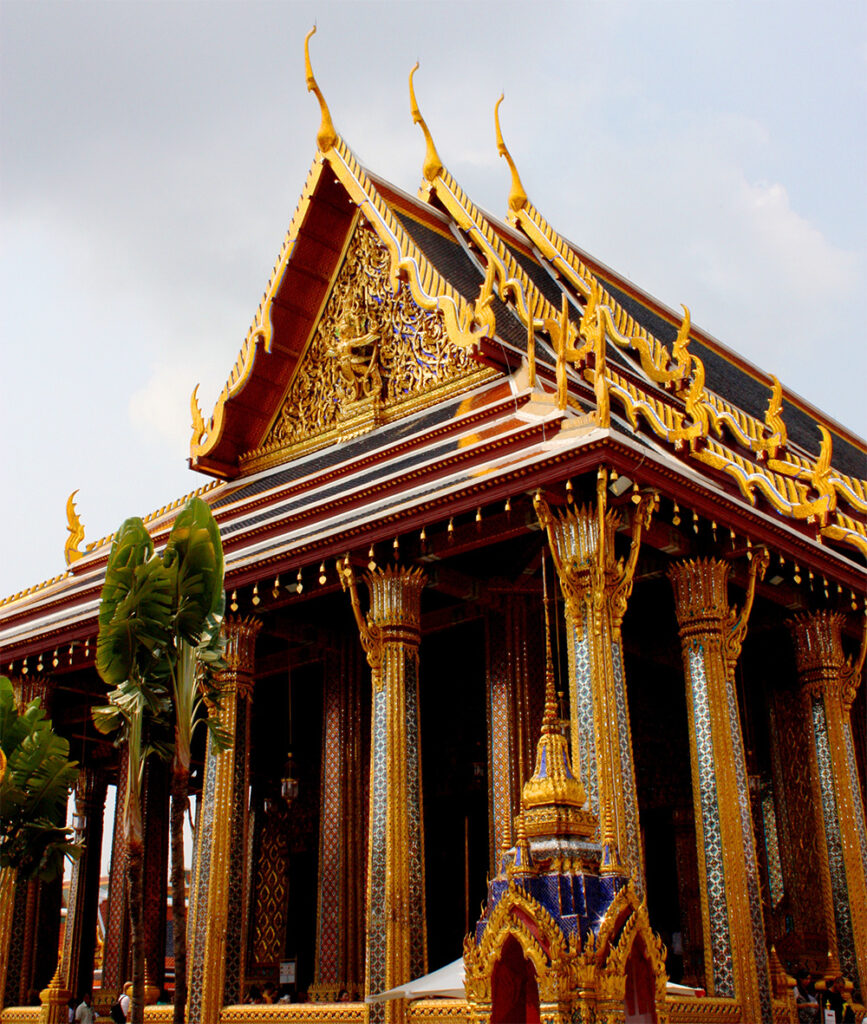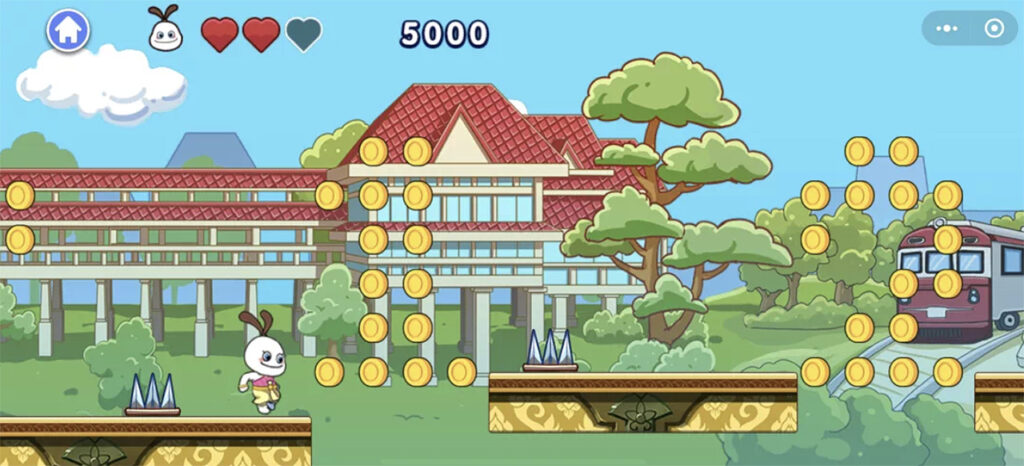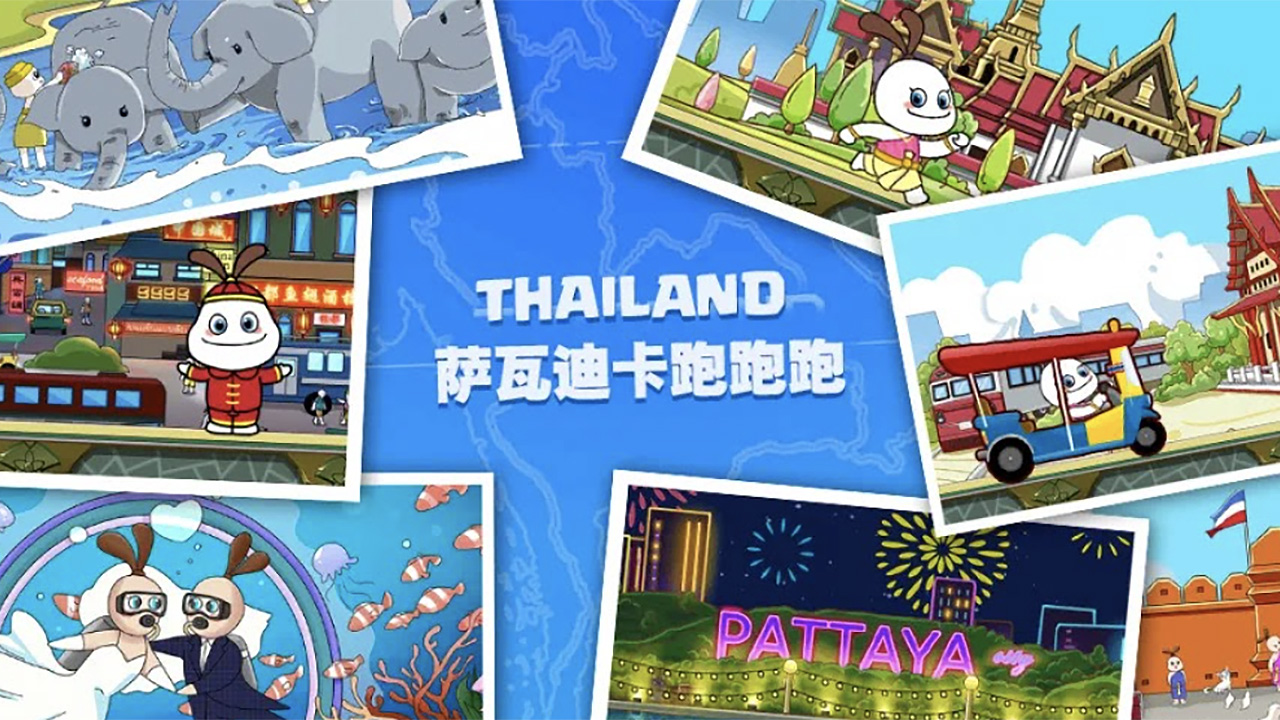When it comes to on the ground presence in China, few destination marketing organizations (DMOs) match the Thailand Tourism Authority (TAT). It boasts six Mainland offices — and for good reason. Pre-COVID, the Land of Smiles came to expect more than 10 million Chinese tourists annually, the largest single source market by some distance.

Featured in the mobile game are Thailand’s key attractions such as the Grand Palace in Bangkok. Image: Wikimedia Commons
Thailand may be cautiously optimistic about luring Chinese tourists back in the coming months, notably through its Phuket Sandbox scheme, but in the interim, TAT continues to build out its digital presence on Chinese platforms. Most recently, it released Sawadika Run, a mobile phone game on WeChat, offering future tourists the chance “to experience the destination virtually and immersively,” as TAT Beijing’s Marketing Manager Xiao Chengzhen, tells Jing Travel.
Released in August, Sawadika Run is a WeChat Mini Program, a non-downloadable app inside Tencent’s signature product, accessible through TAT’s Official WeChat Account. It’s an adventurous coin collection game in which players dash past iconic Thai scenery including Bangkok’s Grand Palace, Pattaya City, and Mu Ko Chang National Park. The fillip? Coins collected by players can be exchanged for travel coupons on Chinese online travel agency, Qunar.
Below, Xiao elaborated on the why the game was developed and how it works to engage prospective Chinese travelers.
Tell us how TAT adapted its marketing during the pandemic.
We can’t stop marketing simply because of the pandemic. Now, we mainly focus on online channels and keeping in close contact with the China market. Our office is maintaining contact with partners and media friends, and working to innovate Thailand’s tourism development models.
You mention staying close to the Chinese market. Which emerging habits and trends are you most attentive to?
Chinese travel habits are undergoing tremendous changes. Small groups and private groups now account for more than 50 percent and in-depth tours are increasingly popular. The panic about the epidemic can be seen as a panic about health. The improvement in [Chinese] living standards in recent years means people are more and more attentive to health — this awareness will continue after the pandemic. What needs to be explained is that health tourism is not just about old-age care; it’s about providing a healthier lifestyle for healthier people.


Players of Sawadika Run collect coins that can be exchanged for travel coupons on Chinese online travel agency, Qunar. Images: Sawadika Run, Thailand Tourism Authority
Why did TAT launch Sawadika Run?
During the pandemic, people in China were not only playing more games, but for longer — overall traffic increased 46 percent. On WeChat, there are more than 500 million game users and as people choose more immersive games to kill time, we saw an opportunity to promote travel through mobile games. Compared to reading other tourists’ comments, looking at photos, or reading travel guides, playing a game creates a stronger sense of participation and experience.
What’s in the game?
By digitizing Thailand’s tourist scenes in an interactive game, players can gain a deeper understanding of Thailand in an immersive environment. Aside from Bangkok, Phuket, Pattaya, and Chiang Mai, which are familiar destinations for Chinese tourists, we also included relatively unfamiliar attractions such as Lampang, Koh Chang, and Udon Thani. Players collect [coins] in the game to redeem vouchers provided by Qunar, as well as cash red envelopes and gifts provided by the TAT.
What was the process of creating the game?
The most difficult part was choosing and creating Thai scenery. In the end, we tried to show Thai architecture and culture through a cute cartoon style. We repeatedly modified the theme routes and game backgrounds; it’s still being continuously updated and we hope to add more destinations and tourism attractions. By cooperating with Qunar, third-party plugins are added to the game to enhance the stickiness.
What’s next for Sawadika Run?
It’s been launched on WeChat Mini Programs, Oppo, Vivo, IOS, Huawei, Toutiao, and Douyin. In the future, our team will design and polish the game, and continue to update and iterate its routes and products. TAT will also launch game and gift activities from time to time.



